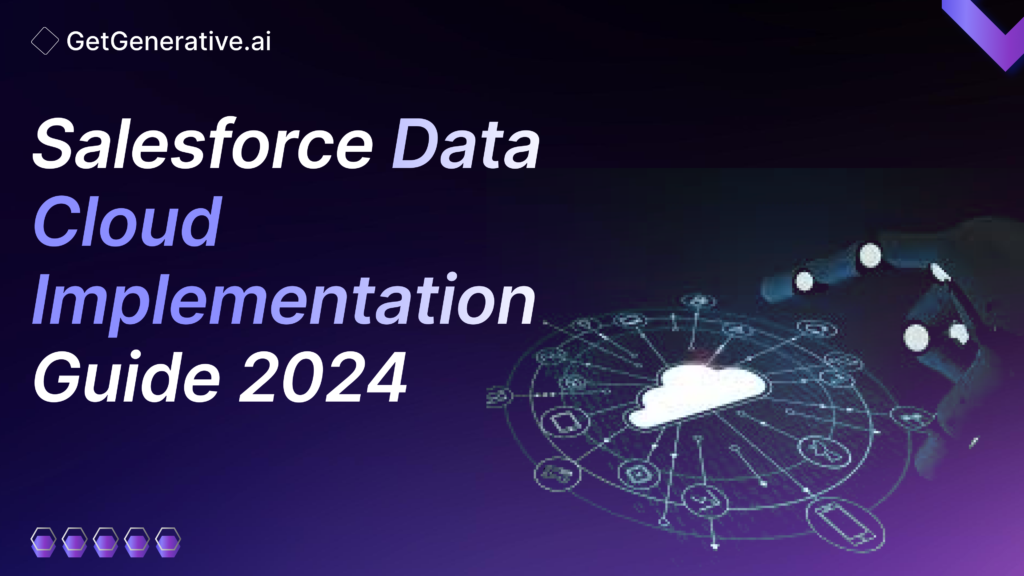Salesforce Data Cloud Implementation Guide 2024
Salesforce Data Cloud has become an indispensable tool for organizations aiming to streamline their data management and enhance customer relationships. In 2024, its relevance has only grown, making its implementation a key focus for businesses looking to leverage Salesforce’s extensive capabilities.
This guide will walk you through the crucial steps and strategies for a successful Salesforce Data Cloud implementation, ensuring you maximize your investment in this powerful platform.
Getting Started with Salesforce Data Cloud
Before diving into the implementation, it’s important to understand the system requirements necessary for Salesforce Data Cloud. These include adequate server capacity, internet bandwidth, and compliance with Salesforce’s technical prerequisites. Initial setup considerations should focus on defining your data goals, understanding the data flow within your organization, and preparing your team for the transition.
Understanding the Core Features
Salesforce Data Cloud offers a robust set of features designed to enhance your data management capabilities:
- Data Integration: Seamless integration with various data sources, ensuring a unified view of customer information.
- Real-Time Customer Profiles: Create comprehensive customer profiles that update in real time, giving your team instant access to critical customer insights.
- Security and Compliance Features: Robust security measures and compliance with global data protection regulations to safeguard your data.
Step-by-Step Implementation
Implementing Salesforce Data Cloud involves several detailed and crucial steps to ensure that the platform is configured correctly, integrated seamlessly with your existing systems, and tailored to meet your organization’s specific needs. Here is a comprehensive guide to help you navigate through the implementation process.
Step 1: Data Mapping
The first step in your Salesforce Data Cloud implementation is data mapping. This process involves identifying all the data sources that your organization currently uses and understanding how this data will flow into Salesforce Data Cloud. Key actions include:
- Identify Data Sources: List all the internal and external data sources, such as other CRM systems, ERP systems, marketing automation tools, and third-party databases.
- Define Data Types: Determine the types of data these sources hold, which might include customer data, transactional data, interaction data, or support data.
- Map Data Fields: Create a comprehensive map of how each field in these sources corresponds to fields in Salesforce Data Cloud. This ensures that all data is accounted for and that there is a clear path for data migration.
Step 2: Integration with Existing Systems
Once you have mapped your data, the next step is to integrate Salesforce Data Cloud with your existing systems. This step is critical as it ensures that data flows seamlessly between systems without loss or corruption.
- Choose Integration Tools: Salesforce offers various tools like Salesforce Connect and MuleSoft for integrating different systems. Select the tool that best fits your needs based on the complexity of your data and existing systems.
- Setup Data Integration: Configure the integration points between Salesforce Data Cloud and other systems. This might involve setting up APIs, web services, or middleware that can translate and transfer data.
- Test Integrations: Before going live, conduct thorough testing to ensure that data flows correctly between systems. Check for data integrity and accuracy.
Also Read – Salesforce B2B Commerce Implementation Guide 2024
Step 3: Data Quality Management
With your systems integrated, focus on managing the quality of data being imported into Salesforce Data Cloud. High-quality, accurate data is crucial for effective data analysis and customer relationship management.
- Cleanse Data: Use data cleansing tools to remove duplicates, correct errors, and standardize data formats. Salesforce Data Cloud provides tools to help in cleaning up data before it is imported.
- Establish Data Standards: Define clear standards for data entry and maintenance. This includes setting up validation rules in Salesforce to prevent incorrect data entry and ensuring that data remains clean and usable.
- Monitor Data Quality: Continuously monitor data quality through regular audits and reviews. Use Salesforce’s built-in dashboards and reporting tools to keep an eye on data health and integrity.
Step 4: User Training and Support
The final step in the implementation process is to ensure that your team is well-equipped to use Salesforce Data Cloud effectively. User adoption is key to maximizing the benefits of the new system.
- Develop Training Materials: Create comprehensive training materials that include user manuals, how-to guides, and video tutorials. These materials should cover all aspects of using Salesforce Data Cloud, from basic navigation to advanced features.
- Conduct Training Sessions: Organize training sessions for different teams based on their roles and how they will use Salesforce Data Cloud. Consider offering both in-person and online training options.
- Provide Ongoing Support: Establish a support system to help users with any questions or issues that might arise. This could include a dedicated internal support team, access to Salesforce support, and regular check-ins to gather user feedback and address concerns.
By following these steps, you can ensure a smooth and successful implementation of Salesforce Data Cloud in your organization. Each step is crucial in making sure that the system is not only functional but also integral to your data management and customer relationship strategies.
Best Practices for Data Governance
Data governance in Salesforce Data Cloud is crucial for maintaining the integrity, privacy, and security of your data. Here are some best practices to ensure robust data governance:
- Establish Clear Data Policies: Define clear policies for data access, usage, and management. Ensure that these policies are in line with legal requirements, particularly for data protection and privacy laws like GDPR and CCPA.
- Role-Based Access Control: Implement role-based access controls (RBAC) to ensure that users can only access data necessary for their role. This minimizes the risk of data breaches and unauthorized access.
- Regular Data Audits: Conduct regular audits to ensure compliance with data governance policies. Audits help identify and rectify gaps in data security and compliance.
- Data Quality Management: Maintain high data quality by implementing processes to continuously clean, update, and validate the data in Salesforce Data Cloud. This ensures that the data remains accurate and reliable for decision-making.
- Data Encryption: Use encryption both at rest and in transit to protect sensitive data. Salesforce provides several tools and features to support data encryption.
- Comprehensive Documentation: Maintain detailed documentation of all data governance policies and procedures. This documentation should be accessible to all stakeholders and updated regularly.
Also Read – Salesforce CRM Implementation With AI
Integration with Other Salesforce Products
Integrating Salesforce Data Cloud with other Salesforce products can significantly enhance your CRM capabilities and provide a seamless experience across various Salesforce applications. Here are some integrations to consider:
- Salesforce CRM: Integrating Data Cloud with Salesforce CRM can provide a unified view of customer data across sales, service, and marketing. This helps in delivering a consistent customer experience and improves cross-functional collaboration.
- Salesforce Marketing Cloud: Integration with Marketing Cloud allows marketers to leverage real-time data for personalized marketing campaigns. It helps in segmenting audiences more effectively and delivering targeted messages.
- Salesforce Service Cloud: By integrating with Service Cloud, customer service teams can access complete customer profiles, including past interactions and preferences. This information can be used to provide more personalized and efficient customer support.
- Salesforce Analytics: Use Salesforce Einstein Analytics to gain deeper insights from the data stored in Salesforce Data Cloud. This can help in making more informed decisions based on data-driven insights.
- Salesforce Platform: Leverage the Salesforce Platform to develop custom applications that utilize the data within Salesforce Data Cloud. This can help in creating tailored solutions that meet specific business needs.
Conclusion
Implementing Salesforce Data Cloud effectively and integrating it with other Salesforce products are crucial steps for any organization looking to improve its data management and customer relationship strategies. By following the best practices for data governance, you can ensure that your data is secure, compliant, and managed effectively.
Visit getgenerativeai.com to learn more!


